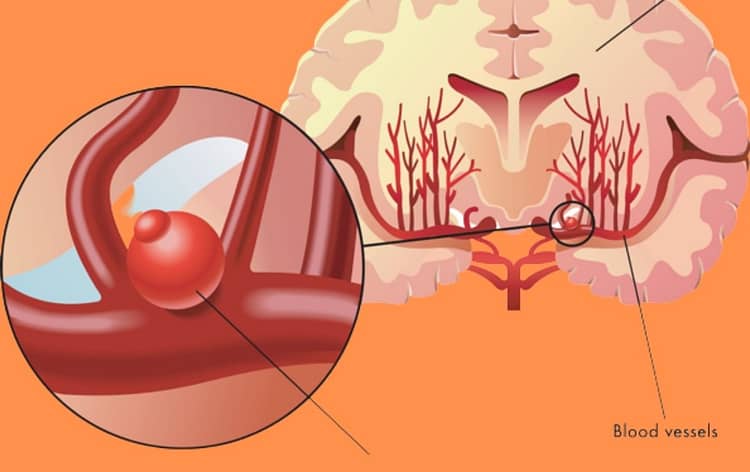
Definition aneurysm
A dilatation of an artery is called an aneurysm. If the walls of the arteries become
weak, then this disease occurs. This disease can occur in any artery of the body.
A brain aneurysm causes
- Due to high blood pressure.
- Due to weakness in the muscles of the walls of the arteries.
- Because of syphilis.
- Due to inflammation of the inner membrane of the heart.
- Due to inflammation of the arteries. due to atheroma.
- Arteries may not dilate after an injury, etc., or after a bullet.
- This disease can also be congenital.
- Shortness of breath
Symptoms of a brain aneurysm
- The feeling of excessive pulsation in the affected arteries. Difficulty swallowing.
- Blue color.
- This is due to a lack of oxygen in the blood, and this condition is called cyanosisin medical language. Blood pooling in the brain.
- Swelling of blood vessels from the brain. The upper body is made up of water.Complications.
Aneurysm complications
- Having that embossment.
- Embolism (air bubbles start forming in the arteries; this is a dangerous condition).
- blood flow
- Paralysis may occur.
Aneurysm treatment medication
-
3x Bryata Carb
Palpitation Rapid breathing Difficulty in breathing, feeling of throbbing in the Severe back weakness.
Feel the bleeding stop. This medicine is a particular medicine for this disease.
-
Lycopodium 630
Arterial dilatation. Loss of body fat. Pain in the lips. All symptoms worsened from 4 pm to 8 pm.
-
Car Bow Annie Malice 1000
Dilation of the chest arteries, causing loss of voice. Severe burning and stinging in the chest
that worsens with walking.
-
Clicker or Floor 3X
Be sure to give Biochemic his special medicine.
Thoracic aortic aneurysm in Females Symptoms
An aortic aneurysm is an abnormal bulge in the body’s main blood vessel, the aorta,
as defined in medical terminology. The aorta is a vein that runs from the top of the
heart down to the legs. It supplies nutrients to various organs and muscles through
a complex arterial system. Men are more likely than women to develop an aortic aneurysm,
but women do have a higher risk and may experience more health issues.
Aneurysm symptoms can vary depending on its size, location, and whether or not it ruptures.
A ruptured aortic aneurysm is a life-threatening condition that requires immediate
medical attention. If an aneurysm is detected, it is crucial to seek medical assistance,
monitor symptoms, and receive treatment as necessary. An aortic aneurysm is an
abnormal bulge in the body’s primary blood vessel, the aorta, according to scientific
terminology. The aorta runs from the heart’s top to the top of the legs. It delivers
nutrients to different parts of the body through a complex network of arteries.
Aortic aneurysms are more common in men than in women, but women who
develop one are at higher risk of health problems. Aneurysm symptoms depend
on its size, location, and whether it ruptures or remains stable. A ruptured aortic
aneurysm is a severe medical emergency that requires immediate attention.
If an aneurysm is detected, it is crucial to stay under medical supervision,
monitor symptoms, and receive treatment if necessary.
Signs of Unruptured aneurysm
According to the National Institute of Neurological Disorders and Stroke, most brain
aneurysms that have not ruptured do not cause symptoms unless they grow significantly.
A small and stable aneurysm usually shows no symptoms.
However, if an aneurysm is large or steadily increasing in size, it can pressure nearby
nerves and tissues, resulting in various symptoms such as numbness, tingling,
weakness, pain behind or above the eye, dilated pupils, facial paralysis on one side,
and changes in vision, including double vision.
Basilar aneurysm symptoms
A brain aneurysm still intact and undamaged does not show any symptoms.
However, if the aneurysm grows and exerts pressure on the nerves or brain
tissue surrounding it, the following symptoms may occur:
- Headache
- Changes in vision
- Dilated pupils
- Tingling or numbness in the head or face
- Pain behind or above the eye
- Seizures
It is essential that you seek medical treatment as soon as possible if you
experience any of these symptoms.
0 Comments